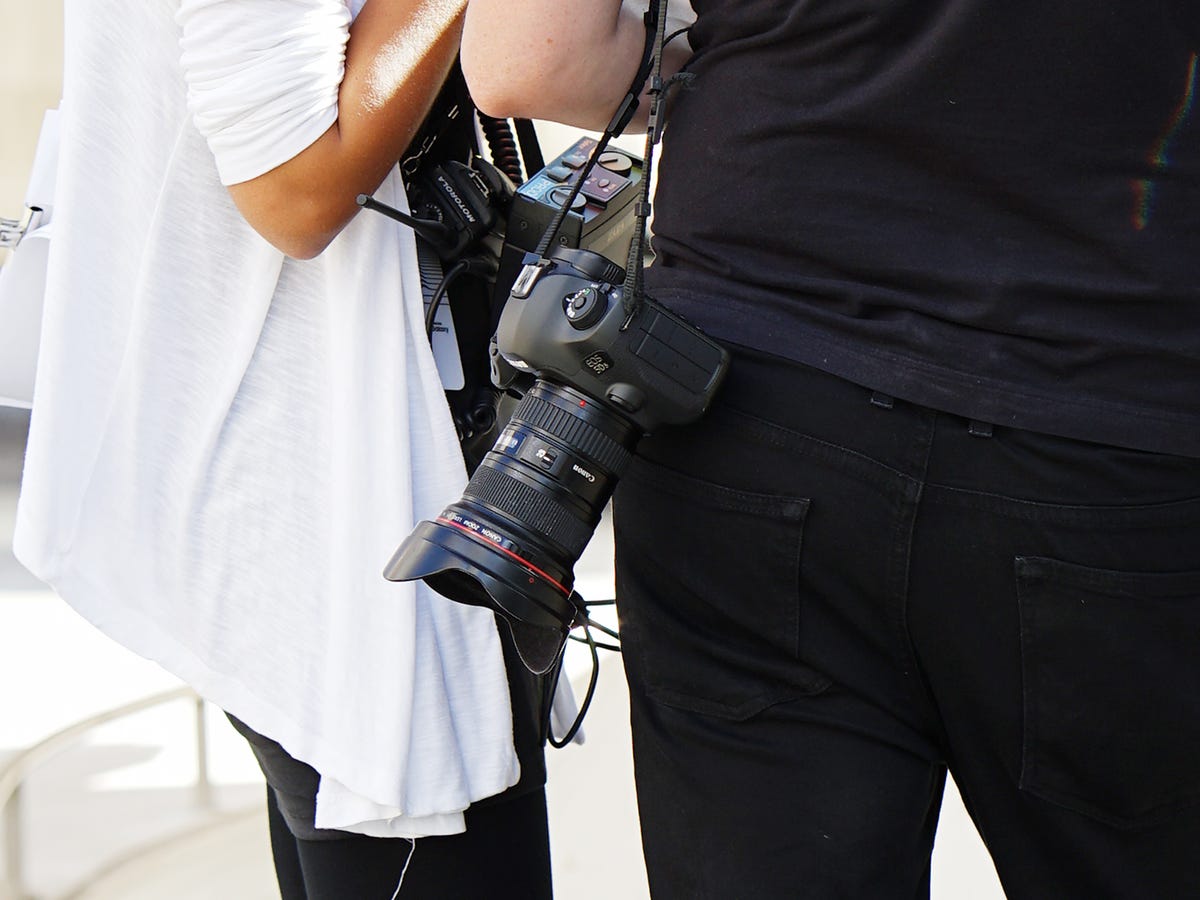
Here's my annual picks of the 20 most interesting cameras I've seen in 2015. These are neither the best nor the worst products I've encountered, nor have I gotten to test some of them yet. They're simply all notable for their contributions, for good or ill, to making cameras fun to cover this year.
(Pictured: the Canon EOs 5DS in the wild)
Canon PowerShot G5 X
I really like the photo quality and feature set of the G7 X, and the G5 X adds back the exact features that are important for enthusiasts, including the hot shoe, grip and EVF, plus a wired remote release jack. I'm still in the middle of testing this one, though, and can tell you it's as disappointingly slow as the G7 X.
Canon EOS 5DS/5DS R
Studio dSLRs are getting squeezed from above as prices drop on medium-format cameras with their large, high-resolution sensors: Pentax's 645D is down to less than $4,000. Canon has fought back with the highest-resolution full-frame sensor to date, a 50MP version that it's put into its 5DS and 5DS R dSLRs, which cost about the same as the Pentax.
Canon EOS Rebel T6s/760D
Canon's Rebel line of entry-to-midrange dSLRs has always had a relatively cheap feel. So this year, the company split its top consumer model into two versions: the conventional T6i/750D and the T6s/760D, which has a better build quality and a few higher-end features.
Canon EOS M3
While there's nothing exceptionally notable about the M3 itself, its existence in the US is. Canon chose to reenter the US market in October with its top-end interchangeable-lens model after meeting a "meh" reaction to its original EOS M in 2013.
Canon PowerShot G3 X
Canon swore it would never make a retro-styled camera but had to take back those words when it released the G3 X this year.
DJI Osmo
The clever Osmo is a battery-powered steadying handgrip with built-in Wi-Fi and camera controls that does double duty as the camera for the DJI Inspire 1 quadcopter.
DxO One
Instead of attempting to improve on the photo quality of the iPhone as many have tried, DxO just decided to replace the camera altogether. And it did so with a very cleverly designed module that plugs in via the Lightning connector.
Fujifilm X-T1 IR
Like Nikon, Fujifilm took its excellent flagship X-T1 interchangeable-lens camera and removed the IR cut filter to turn it into a camera that can see beyond the visible-light spectrum.
Leica SL
It's priced like a Leica, but the Leica SL is one of the company's recent attempts to produce a more mainstream camera (not including the series of Panasonic clones); in this case, one to compete with the Sony A7R II. That means it had to included several un-Leica-like features, including a built-in electronic viewfinder.
Leica Q
This great full-frame compact had a lot of firsts for a Leica (excluding its Panasonic clones), including autofocus.
Nikon D810a
Before the Fujifilm X-T1 IR, Nikon took its flagship D810 and removed the IR cut filter to make it astrophotography friendly.
Nikon Coolpix P900
This Nikon megazoom took the 2015 award for longest lens: 83x zoom, with an equivalent maximum focal length of 2,000mm. Enjoy your paparazzi moments.
Olympus Air A01
While it uses a similar soda-can design to Sony's QX1, the interchangeable-lens camera you strap to your phone, Olympus at least took the A01 a step further and open-sourced the hardware and software for your DIY pleasure.
Panasonic Lumix CM1
In 2013 Samsung's Galaxy NX failed to take off as a cell-network connected camera, but Panasonic gave it another shot this year with a more mobile-friendly design and better partner support.
Panasonic Lumix GX8
Panasonic's compact interchangeable-lens camera is the first to use a new 20-megapixel four-thirds-size sensor. Most Micro Four Thirds cameras have been stuck with 16 megapixels for years.
Ricoh Theta S
Ricoh's third generation of its 360-degree camera is one of the most attractive implementations of its type.
Sony RX1R II
Sony took everything it learned from its RX100 series design -- including a retractable popup viewfinder -- and updated its ground-breaking RX1R. The result is a camera that makes you say "Want."
Sony Cyber-shot RX100 IV
Sony keeps cramming more into its compact RX100 series of cameras; in this case, Sony expanded its capabilities with a lot of useful video options and 4K recording. It's also one of the two Sony cameras that launched the company's stacked CMOS sensor.
Sony A7R II
This camera marked the debut of the first full-frame backside-illuminated sensor, making it the first full-frame camera capable of shooting 4K video.
Sony Cyber-shot RX10 II
Like the RX100 IV, the RX10 II is one of the first cameras to incorporate Sony's stacked CMOS sensor, making high frame-rate video (for slow motion) possible in addition to 4K video shooting.
Holiday picks
See which of these cameras made our top holiday picks.


